Using satellite imagery to improve farmer living standards
Written by Carolina Pirola - article sponsored by Satelligence
Although some countries and private companies are already taking strong action against climate change, few will be surprised to know that we are far from the goal set in the Paris Agreement to limit global temperature rise to below 2ºC. Scientists have warned us for years that aside from investing in renewable energies, our second-highest priority should be finding a solution to deforestation if we are to meet the climate goals. In fact, according to the most recent Intergovernmental Panel on Climate Change’s Special Report on Climate Change and Land, “reducing deforestation and forest degradation rates represents one of the most effective and robust options for climate change mitigation.” And yet, hundreds of millions of hectares of forest are lost every year.
An initiative often embraced by companies worldwide is offsetting, which is the practice of counteracting their carbon emissions by investing in a project that reduces carbon emissions elsewhere. While compensating may offer some benefits, reducing greenhouse gas emissions within a company’s supply chain (or ‘insetting’) has a higher impact potential and is more effective in the long run. As explained by the International Platform for Insetting (IPI), by tackling emissions within their supply chain, companies are able to “transform their operations to recognise and support healthy ecosystems and resilient communities to secure the raw materials their products depend upon.”
Photo courtesy of Satelligence
Keeping forest canopies intact can benefit both the planet and farmers
One of the solutions currently being explored is harnessing the power of satellite imagery to track carbon storage in coffee farms. If peppered with shade trees, coffee farms have the potential to prevent carbon loss, which may lead to the implementation of well-intentioned policies that seek to preserve the forest canopy. However, oftentimes, farmers’ livelihoods partially depend on clearing their trees to create firewood or to plant more crops.
So, how do we make sure that we don’t lose sight of farmers' needs? Dutch impact tech startup Carble has come up with a powerful answer: the combination of satellite imagery and digital payments. The company has partnered with satellite solutions provider Satelligence to help coffee companies estimate how much carbon is stored by the trees of specific coffee farms so that a premium can be paid to producers based on those calculations. In this partnership, Satelligence supplies the satellite-based data components, including historical deforestation rates, Near Real Time deforestation monitoring, and an estimate of the Minimum Guaranteed Carbon Bank. Aside from developing the platform where their customers can monitor the emissions of the coffee farms, Carble was responsible for coming up with a payment formula that was fair for farmers.
To better understand the feasibility of these results-based payments, the companies recently completed a six-month pilot project in Ethiopia. Using datasets from NASA’s Landsat satellites and the European Space Agency’s Sentinel-1 and 2, as well as spaceborne laser data (GEDI) and machine learning, they were able to measure carbon storage in smallholder coffee farms. Carble then uploaded the information to their platform so that their customers could monitor carbon storage levels in the farms from where they source their coffee. Financial incentives were then calculated based on the verified emission reductions achieved by those farms. “For this pilot we have calculated the price per tCO2e (ton of CO2 equivalent [1]) to be slightly above the price the participating roasters are currently paying for carbon offsets. Since insetting is inherently better than offsetting, we expect that the value of carbon insets relative to offsets will increase over time,” explains Carble CEO Sander Reuderink.
Photo courtesy of Satelligence
An initiative with impact potential
The findings of this pilot show that the project can be turned into a workable business model that benefits both farmers and the environment. The solution has proved to not only help estimate the amount of carbon stored by farms but also to have the potential to significantly reduce the living income gap and raise producer living standards. In addition to calculating local carbon storage and their incentives, Carble provides information to participating companies about the actual impact the additional income has on the living standards of their partner producers. This is done by comparing current data with a baseline scenario that considers the percentage of forests that are cut down each year and the economic viability of the farms.
Thanks to the quality and regular updating of the datasets used, the model is easily scalable, and Carble and Satelligence are already working on GPS-mapping some 100 smallholder farms in the Guji zone, Ethiopia. The companies then hope to expand the project to 1 million smallholder farms by 2030. According to Carble, the end goal is that the premium paid to farmers for storing carbon is built into the commodity price. “Coffee can only benefit all people in the supply chain while remaining within our planetary boundaries if we ensure that environmental sustainability becomes economically sustainable as well. With this project, we are taking a small but important step towards this future”, concludes Sander.
[1] A carbon dioxide equivalent is a metric measure used to compare the emissions from various greenhouse gases on the basis of their global-warming potential (GWP), by converting amounts of other gases to the equivalent amount of carbon dioxide with the same global warming potential. Source: Eurostat
Carolina Pirola
Carolina Pirola is a journalist and communications specialist based in Madrid, Spain. A personal interest in sustainability led her to investigate coffee farming communities in the Canary Islands and northern Argentina, where she discovered the multitude of challenges & inequities that smallholder producers face.




